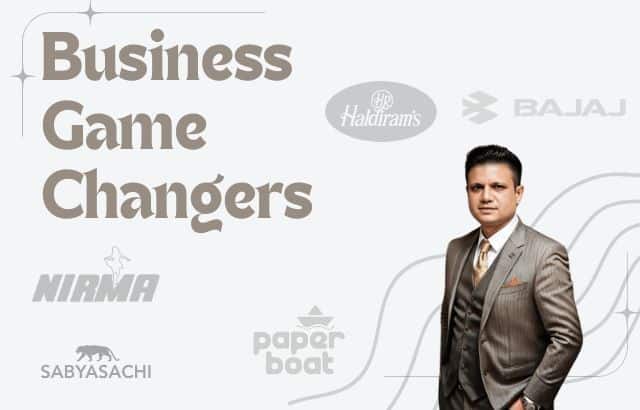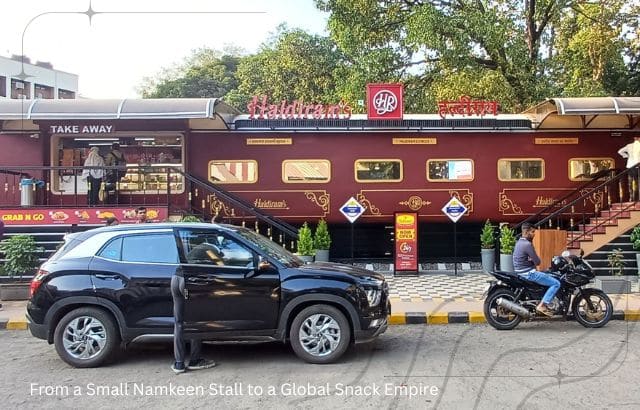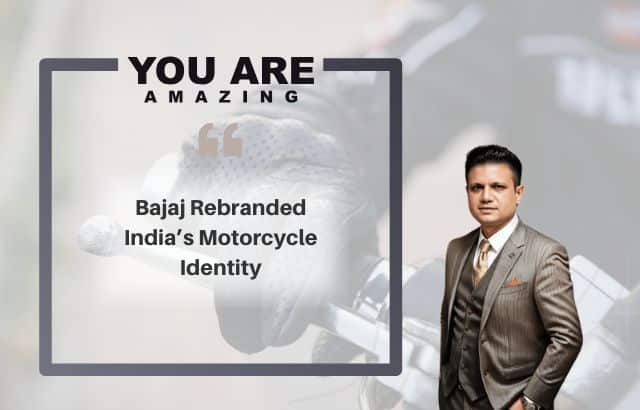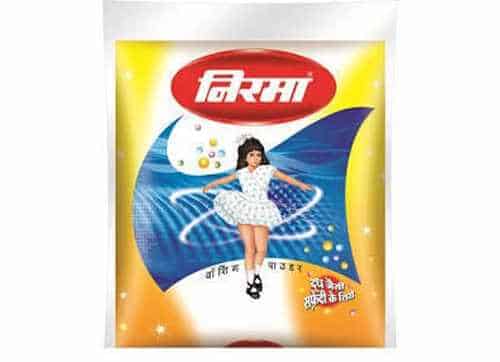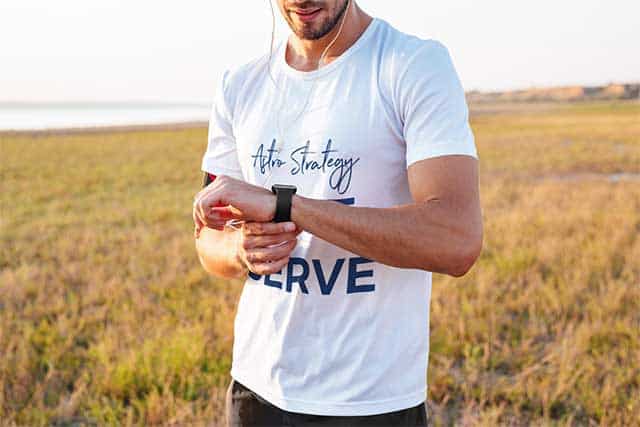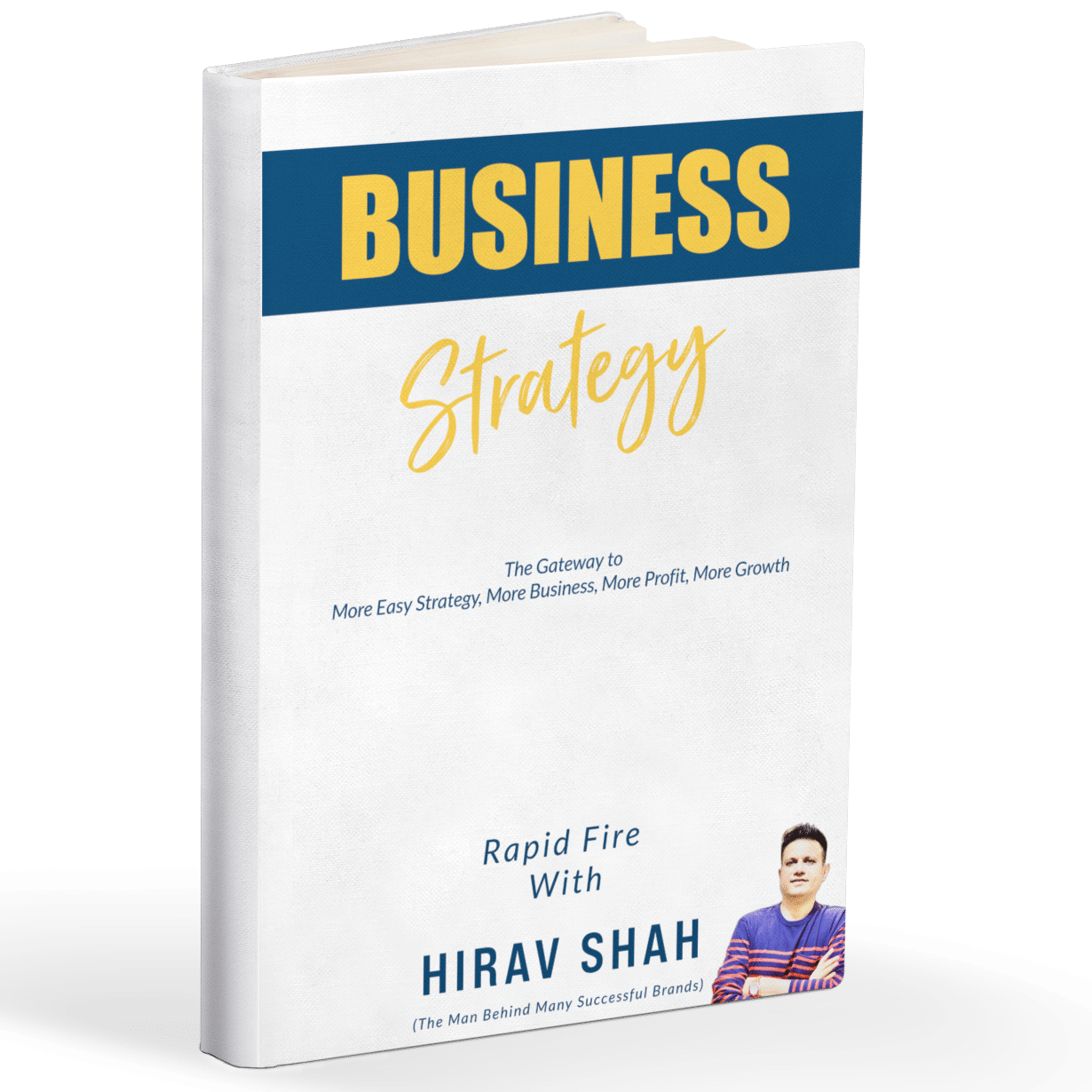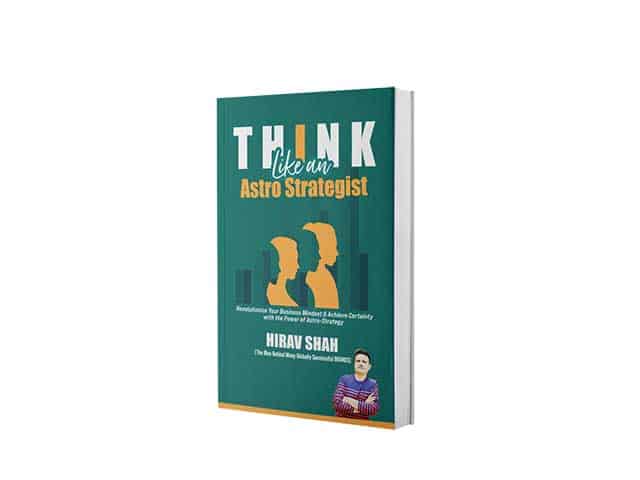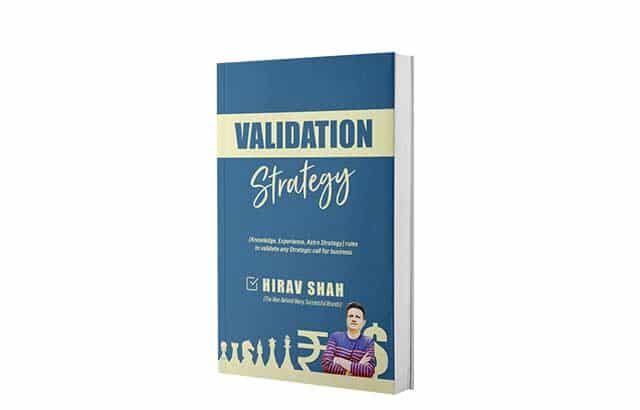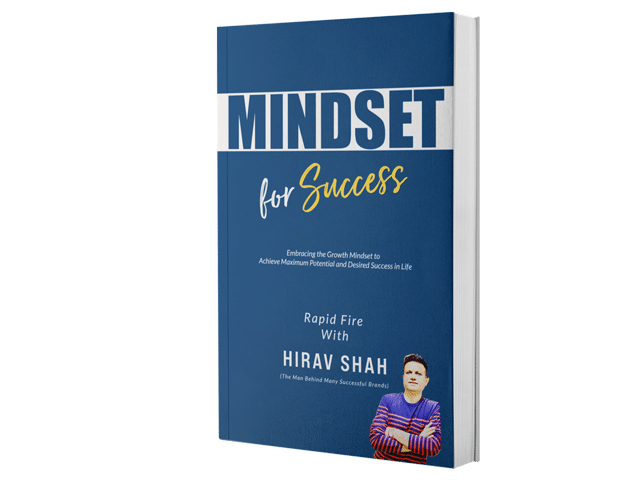Table of Contents
How Disruptors Change the Game
Some brands don’t just evolve—they explode the norm. They create new categories, challenge assumptions, and flip the status quo. The following five Indian brands dared to disrupt—and in doing so, redefined their industries.
“Disruption isn’t just about breaking something—it’s about building something better from the break.”
— Hirav Shah
Let’s decode the blueprint of India’s boldest business pivots.
🍲 Haldiram’s – From a Small Namkeen Stall to a Global Snack Empire
🔧 Struggle: How Haldiram’s Faced Fragmentation, Competition, and Growing Pains
In the 1930s, a small shop in Bikaner, Rajasthan, began selling bhujia—a crispy, spicy snack. The man behind the counter was Ganga Bishan Agarwal, lovingly known as Haldiram. His product was unique, but his challenges were massive.
Haldiram faced stiff local competition, no branding, and limited market access. His early years were about survival, not scale.
By the 1950s and 60s, as the business passed to the next generation, it remained largely regional—popular only in parts of Rajasthan and West Bengal. There was no national strategy. Moreover, as the brand expanded into Nagpur and Delhi via different family branches, it was fragmented—with no single ownership, no brand standardization, and zero global ambition.
In the 1980s and 90s, when multinationals like PepsiCo and ITC started entering India’s snacks space, Haldiram’s appeared traditional, unstructured, and vulnerable. Its namkeen looked outdated, packaging lacked appeal, and operational inefficiencies threatened its future.
⚡ Turning Point: Modernization Without Losing Tradition – Haldiram’s Quiet Revolution
What changed the game wasn’t just one move—but a series of clear, bold strategies executed across different cities by the family-led teams.
The key turning point came when the brand decided to modernize without losing its roots:
- They invested in automated food processing plants to ensure hygiene and consistency—a major shift from traditional hand-cooked methods.
- Packaging was upgraded to printed, sealed, and shelf-stable designs, matching global brands.
- In Delhi, they launched quick-service restaurants that offered Indian snacks, thalis, and sweets in clean, family-friendly spaces—blending fast food with traditional Indian cuisine.
- In Nagpur, Haldiram’s expanded its distribution network and introduced a wider range of SKUs—from papads and pickles to frozen parathas and ready-to-eat curries.
- Internationally, they understood the NRI pulse. By 2000s, Haldiram’s snacks were exported to over 80 countries, with halal certification and FDA approvals for the US.
Crucially, despite internal family divisions, all branches stuck to one goal: make Haldiram’s the synonym for Indian snacks.
🏢 Empire Snapshot: Haldiram’s Multi-Format Success Across FMCG, QSR, and Export
Today, Haldiram’s is a multi-billion-dollar empire, with:
- Estimated annual revenue over ₹8,000 crore+
- 400+ products in namkeen, sweets, frozen, and ready-to-eat categories
- Exports to 80+ countries
- Massive presence in both retail shelves and quick-service restaurants
- A brand value stronger than many global FMCG giants in Indian households
In 2023, reports surfaced about Tata Group considering a stake in Haldiram’s—a testament to how far the brand had come.
🌍 Legacy & Impact: Redefining Indian Snacks and Standardizing Street Food for the World
Haldiram’s transformed the way India viewed homegrown food brands. Before it, Indian packaged snacks were unbranded or considered “street-grade.” Haldiram’s turned them into products of pride.
It also pioneered the hybrid business model—a rare blend of FMCG retail, dine-in restaurants, takeaway counters, and global export—making it not just a brand but a food ecosystem.
The biggest legacy? It showed that you don’t have to be Western to be world-class. Indian flavors, when packaged with vision and hygiene, can win across continents.
📘 Lesson for Entrepreneurs: You Don’t Need One Office to Build One Powerful Brand
Respect your roots—but don’t let them limit your ambition.
Haldiram’s teaches that scale doesn’t come by chance—it comes from adapting, professionalizing, and thinking ahead of the curve. And even without a unified family structure, clarity of brand purpose can build global dominance.
🧠 Key Trait: Quiet Execution, Deep Clarity, and Respect for Cultural Roots
Clarity + Adaptation + Quiet Execution
While many Indian brands tried too hard to look “modern,” Haldiram’s stayed Indian—but polished every touchpoint: product, packaging, hygiene, and brand experience.
“Some brands shout. Others scale. Haldiram’s scaled with substance, not noise.”
– Hirav Shah
🔮 Hirav Shah’s Strategic Perspective: Aligning Haldiram’s Expansion and Brand Clarity Across Divisions
If Hirav Shah had been called to guide Haldiram’s during their expansion phase, here’s where his business validation expertise would add exponential value:
- ✅ Validate Expansion Models: Which SKUs were best suited for scaling into retail, which for restaurants, and which for export? Astro Strategy could pinpoint right timing + location for major rollouts.
- ✅ Unify Brand Direction: Across different family-run zones, Hirav could ensure alignment on brand tone, packaging consistency, and long-term vision using his clarity framework.
- ✅ Diagnose Growth Gaps: Identify which formats (dine-in, frozen, FMCG) were draining vs. delivering real ROI.
- ✅ Execute International Strategy: Validate which countries, certifications, and distributor models aligned with Indian flavor appeal and business luck cycles.
- ✅ 6+3+2 Alignment:
- Hard Work & Skills: Improve operational scale.
- Mindset: Move from “traditional shop” to “global brand.”
- Strategy & Execution: Rollout new product lines & distribution networks.
- Luck & Timing: Use Astro insights for investor meetings, retail launches, FDI negotiations.
- Hunger + Consistency + Dedication: Maintain quality across all formats.
- Innovation + Marketing: Introduce Haldiram’s as a “legacy-modern” brand via storytelling.
“In family-led businesses, the real turnaround begins when clarity outgrows comfort.”
– Hirav Shah
🍹 Paper Boat – Bottling Nostalgia in a Modern World
🔧 Struggle: Paper Boat’s Challenge to Package Indian Memories in a Beverage Market
Launched in 2013 by Hector Beverages, Paper Boat entered a hyper-competitive beverage space dominated by carbonated giants like Pepsi, Coke, and Slice. But instead of joining the fizzy war, Paper Boat chose to revive traditional Indian drinks like aam panna, jaljeera, imli, and panakam.
The struggle? The category itself didn’t exist. Retailers didn’t know where to place the product. Consumers found it expensive for something they could make at home. Many early adopters were unsure if nostalgic drinks could feel premium—or even necessary.
Moreover, packaging traditional flavors into modern formats meant walking a fine line between authenticity and aspiration.
⚡ Turning Point: How Paper Boat Used Storytelling to Create a Category of One
Paper Boat’s breakthrough came not from taste alone—but from emotionally intelligent branding.
- Each flavor was launched with a personal story—evoking summer holidays, school breaks, or grandma’s kitchen.
- Its packaging—soft doypacks with pastel palettes—stood out on every shelf.
- TV and digital ads were poetry in motion—minimal words, music-driven visuals, and moments that reminded India of its innocence.
- The brand also expanded smartly to airports, cafes, bookstores, and e-commerce—targeting emotion-driven buyers, not mass-market soda fans.
Paper Boat didn’t just sell drinks. It sold childhood.
🏢 Empire Snapshot: Paper Boat’s Rise from D2C Niche to Millennial Favorite
Today, Paper Boat:
- Offers over 15+ regional beverages, plus snacks and chai blends
- Is stocked in 20,000+ retail stores and e-commerce platforms
- Has a loyal base across millennials, NRIs, and urban nostalgia lovers
- Is considered a pioneer in India’s storytelling-driven D2C space
While it doesn’t match the volumes of Coke or Pepsi, it has carved its niche—and it owns it.
🌍 Legacy & Impact: Reviving Regional Flavors Through Design, Memory, and Emotion
Paper Boat redefined how India’s regional past can be monetized in a modern way. It set the tone for new-age Indian brands to explore emotion + design + storytelling without westernizing their identity.
It’s also a branding masterclass—less advertising, more connecting.
📘 Lesson for Entrepreneurs: Emotion + Execution = Lasting Connection in Crowded Markets
Innovation isn’t just about new tech. Sometimes, it’s about rediscovering what we already loved—and delivering it with honesty and elegance.
Paper Boat shows that your greatest product may be an emotion your audience forgot they missed.
🧠 Key Trait: Cultural Sensitivity, Premium Packaging, and Emotional Insight
Instead of competing in cola wars, Paper Boat built a memory-led, design-forward brand that’s both premium and personal.
“Paper Boat didn’t sell juice. It sold childhood. And that’s what people truly bought.”
– Hirav Shah
🔮 Hirav Shah’s Strategic Perspective: Timing, Emotional Alignment, and Global Growth Potential
If Hirav Shah had validated Paper Boat’s early-stage decisions, here’s how he’d elevate its trajectory:
- ✅ Emotion Calibration: Map nostalgia campaigns with seasonal sentiment—Holi for thandai, Summer for aamras, etc.
- ✅ Product Timing Validation: Launch SKUs with Astro-aligned energy windows for maximum receptivity
- ✅ Global Diaspora Strategy: Identify NRI-rich markets where Paper Boat’s sentiment holds deepest emotional weight
- ✅ Channel Clarity: Validate timing and mix of retail vs. D2C vs. gifting vs. experience zones (museums, airports)
- ✅ 6+3+2 Alignment:
- Hard Work + Storytelling: Built into every pack
- Strategy & Execution: Unique brand positioning
- Mindset & Skills: Strong design and emotional awareness
- Hunger + Consistency + Dedication: Staying in a niche without diluting it
- Innovation + Marketing: Campaigns like “Drinks & Memories” that made people feel, not just buy
“In a world of trends, Paper Boat taught us that memories never go out of style.”
– Hirav Shah
👑 Sabyasachi – From Boutique Designer to Global Luxury Icon
🔧 Struggle: How Sabyasachi Mukherjee Faced Resistance in a Mass-Driven Fashion Industry
In the early 2000s, India’s fashion scene was dominated by western trends, fast fashion, and affordability. Luxury ethnic couture was seen as too niche, too traditional, and commercially risky.
Sabyasachi Mukherjee, a boy from Kolkata with no fashion lineage, dared to challenge that. When he launched his label in 1999, he was unheard of, self-funded, and operating from a 10×10 room. Buyers called his work too vintage, too layered, and too out-of-sync with the sleek silhouettes trending then.
His intricate, Bengali-inspired aesthetics were called “museum-like,” and his pricing was often questioned. Breaking into the ultra-competitive wedding and celebrity space—without PR muscle or film family links—was a steep uphill climb.
⚡ Turning Point: How Sabyasachi Turned Heritage Into High Fashion
Sabyasachi didn’t change for the market—he changed the market for his art.
- His collections like Kora, Fiza, and Chand Bibi romanticized India’s regal past through zari, zardozi, vintage florals, and handlooms.
- He focused on craftsmanship over commerce—highlighting weavers and karigars in every conversation.
- His turning point came when top Bollywood actresses like Vidya Balan, Rani Mukerji, and later Deepika Padukone embraced his label for their weddings.
- His bridal wear became aspirational, turning wedding attire into a personal, emotional, and royal experience.
- In 2021, Sabyasachi stunned the fashion world by collaborating with H&M, making his designs accessible to a global audience—without losing artistic essence.
- He expanded into jewelry, accessories, and eyewear, building a holistic luxury ecosystem—“The Sabyasachi World.”
🏢 Empire Snapshot: Sabyasachi’s Evolution from Atelier to Empire
Today, Sabyasachi is:
- India’s most recognized luxury couture house
- Selling bridal wear, fine jewelry, accessories, and global collaborations
- With flagship stores in Kolkata, Mumbai, Delhi, NYC, and Dubai
- Designing for top celebrities, global personalities, and heritage families
- A label where each outfit is not just stitched—but storied
He redefined the meaning of “Indian luxury”—not as shiny excess, but as soulful elegance.
🌍 Legacy & Impact: Redefining Indian Heritage in the Global Fashion Language
Sabyasachi made slow fashion desirable. He revived dying weaves, empowered rural artisans, and proved that India’s design legacy could match Paris, Milan, or New York.
His global campaigns featured plus-size models, dusky tones, rural backdrops, and real faces—breaking stereotypes and reframing beauty.
He didn’t just export products. He exported pride.
📘 Lesson for Entrepreneurs: Build Culture, Not Just Commerce
Sabyasachi shows that depth wins over trends. He didn’t follow the market—he educated it.
His story is proof that when you believe in your vision and protect your values, the world eventually adjusts to your frequency.
🧠 Key Trait: Artistic Integrity + Cultural Reinvention + Long-Term Vision
Every design, store, and campaign is thoughtfully crafted with emotion, narrative, and consistency.
“Sabyasachi didn’t just dress brides—he dressed India’s imagination.”
– Hirav Shah
🔮 Hirav Shah’s Strategic Perspective: Validating Growth Without Diluting the Brand Soul
If Hirav Shah had advised Sabyasachi at key milestones, he’d focus on scaling while preserving soul:
- ✅ Validate New Verticals: Jewelry, eyewear, home—ensuring alignment with brand energy and timing.
- ✅ Astro-Aligned Store Launches: Choosing launch dates, locations, and pricing strategies for new cities.
- ✅ Global Expansion Timing: Opening NYC and Dubai stores at optimal astrological phases for visibility and stability.
- ✅ Emotional Connection Strategy: Mapping campaigns to Indian festivals, weddings, and heritage moments.
- ✅ 6+3+2 Alignment:
- Hard Work & Skills: Artisan revival
- Strategy & Execution: Building The Sabyasachi World
- Mindset: Luxury as storytelling
- Hunger + Dedication + Consistency: Over 20 years of evolving elegance
- Innovation + Marketing: Iconic visuals, poetic tone, timeless positioning
“If your brand has soul, the market will eventually seek you—even if you’re not chasing it.”
– Hirav Shah
🛵 Bajaj Auto – From Scooter Giant to Global Two-Wheeler Powerhouse
Bajaj Auto is a name etched in Indian hearts—once the face of family scooters through its iconic Chetak, and now a global motorcycling brand exporting to over 70 countries. Established in 1945, Bajaj was known for reliability, affordability, and the unforgettable line: “Hamara Bajaj.” But legacy alone doesn’t guarantee future relevance. The brand had to choose between holding on to history or rewriting it.
“Legacy is an asset—but only when you know when to preserve it and when to pivot.”
– Hirav Shah
🔧 Struggle: How Bajaj Auto Struggled to Stay Relevant in a Changing Market
For decades, Bajaj Chetak was the king of Indian roads. “Hamara Bajaj” wasn’t just an ad—it was an emotion. But by the late 1990s, the very market Bajaj had once dominated began slipping away.
Consumer preferences were shifting from scooters to sleek motorcycles. Companies like Hero Honda and TVS were innovating with fuel efficiency and sporty designs. Meanwhile, Bajaj scooters began to look outdated.
Internally, Bajaj Auto faced innovation inertia and an over-dependence on legacy products. Its distribution was strong, but its offerings were losing appeal among India’s growing young population.
⚡ Turning Point: Bajaj’s Bold Shift from Scooters to Sport Bikes
In the early 2000s, Rajiv Bajaj, son of Rahul Bajaj, made a bold—and controversial—move. He phased out scooters, including the legendary Chetak, and decided to reinvent Bajaj as a motorcycle brand.
- The Pulsar was born—a fuel-efficient, sporty, affordable bike that clicked instantly with young India.
- In 2007, Bajaj took a global leap by acquiring a stake in KTM, giving it access to high-performance designs and R&D.
- Bajaj rebranded itself as the “World’s Favourite Indian”, focusing on exports to Africa, Latin America, and South Asia.
- In 2020, the Chetak was reborn as an electric scooter—closing the loop between legacy and innovation.
🏢 Empire Snapshot: Bajaj’s Rise as a Global Motorcycle Leader
Today, Bajaj Auto:
- Is India’s largest motorcycle exporter
- Present in 70+ countries, accounting for over 50% of total two-wheeler exports from India
- Owns powerful brands like Pulsar, Avenger, Dominar, and Chetak (Electric)
- Has global strategic partnerships with KTM, Husqvarna, and Triumph
- Continues to lead in design, pricing strategy, and performance innovation
🌍 Legacy & Impact: How Bajaj Rebranded India’s Motorcycle Identity
From being seen as a “scooter company” to being India’s answer to sporty motorcycling, Bajaj’s transformation is a textbook example of self-disruption.
The brand showed that even giants need to kill their darlings to stay relevant.
📘 Lesson for Entrepreneurs: Reinvention Requires Letting Go
Sometimes, saving your legacy means rewriting it. Rajiv Bajaj chose clarity over nostalgia.
Bajaj teaches that one right bet—executed with full conviction—can shift an entire industry.
🧠 Key Trait: Strategic Courage + Precision Execution + Brand Rebirth
From manufacturing scooters to crafting experiences, Bajaj re-engineered its purpose.
“You don’t need to forget your past. You just need to rewrite it in a way that fits the future.”
– Hirav Shah
🔮 Hirav Shah’s Strategic Perspective: Phasing Out, Phasing In—With Perfect Timing
If Hirav Shah had guided Bajaj Auto during this evolution, he’d focus on:
- ✅ Validating Chetak’s Retirement: Strategic timing for emotional detachment vs. market redirection
- ✅ Astro-Aligned Global Expansion: Selecting right countries and quarters for high growth momentum
- ✅ Product Strategy Alignment: Mapping Pulsar and KTM entry with consumer and planetary cycles
- ✅ Electric Scooter Launch Window: Using astro-strategy to reintroduce legacy models as EVs
- ✅ 6+3+2 Alignment:
- Hard Work & Mindset: Letting go of comfort zones
- Strategy & Skills: Mastering performance segment
- Execution & Luck: Timed entries with precision
- Hunger + Consistency + Dedication: Risk-taking backed by data
- Innovation + Marketing: From “Hamara Bajaj” to “World’s Favourite Indian”
“True disruption is not when the market changes—but when you choose to change before it forces you.”
– Hirav Shah
🧼 Nirma – From Backyard Formula to a Billion-Rupee Mass Revolution
Nirma is not just a detergent brand—it’s a movement that changed the rules of India’s FMCG market. Launched in 1969 by a humble chemist named Karsanbhai Patel, Nirma began as a low-cost washing powder made at home and sold door-to-door. What started as a tiny side hustle eventually disrupted multinational giants and became a household name, all thanks to pricing, persistence, and one unforgettable jingle.
“If a brand can become a song in your customer’s heart, it has already won half the battle.”
– Hirav Shah
🔧 Struggle: How Nirma Entered a Market Dominated by Multinationals
In the late 1960s, the Indian detergent market was ruled by Surf (HUL)—a high-priced product catering to the urban elite. The majority of India’s population, especially in rural areas, couldn’t afford branded detergent.
Karsanbhai Patel, a chemist from Ahmedabad, started mixing phosphate-based detergent in his backyard and selling it for ₹3 per kg, when Surf sold at ₹13. Initially, customers were hesitant. Trust in an unbranded, homemade product was low.
He had no formal retail chain, no marketing team, and no capital to scale. Yet, armed with conviction and affordability, he went door-to-door, building belief one household at a time.
⚡ Turning Point: How Nirma Used Emotion, Pricing, and Music to Disrupt Giants
The turning point came in the 1980s when Nirma launched its now-iconic jingle:
“Doodh si safedi Nirma se aaye, rangeen kapda bhi khil khil jaaye…”
- The ad featured a dancing girl in a white frock—symbolizing purity, simplicity, and innocence.
- This emotional storytelling, combined with mass affordability, made Nirma a trusted companion in millions of homes.
- It expanded rapidly—introducing soaps, toothpaste, and beauty products—all priced below premium brands.
- Despite harsh competition and allegations of environmental concerns, Nirma held its ground by owning the value-for-money positioning.
“When you know your audience, you don’t need a celebrity—you need a mirror. Nirma reflected the Indian middle class perfectly.”
– Hirav Shah
🏢 Empire Snapshot: Nirma’s Rise from Local Product to FMCG Phenomenon
- Grew from a ₹3 backyard detergent to ₹7,000+ crore group
- Became India’s largest detergent brand by volume in the 1990s
- Expanded into soaps, cosmetics, edible salt, and cement
- Established manufacturing units across Gujarat and Rajasthan
- Continues to hold market share in Tier 2 and rural segments
🌍 Legacy & Impact: Making Clean Clothes Affordable for Every Indian Household
Nirma changed the way India consumed. It democratized cleanliness, making personal and home hygiene accessible to every income class. It compelled MNCs to drop prices, localize messaging, and revisit their arrogance.
Nirma also proved that a brand can be built without glamour—just clarity, consistency, and connection.
📘 Lesson for Entrepreneurs: Create for the Majority, Not the Minority
Nirma teaches that you don’t need a boardroom to start—you need a problem to solve and the guts to solve it differently.
Your distribution can be your feet. Your marketing can be your honesty. And your brand can be your customer’s story.
🧠 Key Trait: Affordability + Cultural Relevance + Emotional Branding
Nirma didn’t win with ads—it won with understanding. The product wasn’t perfect, but the brand became relatable, reachable, and real.
“Nirma didn’t enter the market—it entered the home, the heart, and the everyday life of India.”
– Hirav Shah
🔮 Hirav Shah’s Strategic Perspective: Scaling Simplicity with Strategy and Timing
If Hirav Shah had guided Nirma during its breakout years, he would have helped:
- ✅ Validate mass appeal positioning: Confirm pricing strategy was karmically aligned to solve a real social need
- ✅ Map expansion products (soap, toothpaste) with timing of market cycles and rural spending behavior
- ✅ Astro-align national ad campaigns with high-energy planetary periods to maximize brand imprint
- ✅ Diagnose gaps in premium vs. mass segmentation before entering categories like cement or FMCG diversification
🔁 6+3+2 Alignment:
- 6 Core Drivers
- Hard Work: Door-to-door sales, bootstrapping from scratch
- Mindset: Solve for the majority, not the privileged
- Strategy: Price-point disruption + local scale
- Skills: Basic chemistry + homegrown advertising
- Execution: Direct selling + jingle-driven recall
- Luck: Right timing with media boom & detergent demand
- 3 Traits
- Hunger: Never stopped expanding categories
- Dedication: Decades of loyalty to affordability
- Consistency: Same tone, same value system, every time
- 2 Amplifiers
- Innovation: Made detergent marketing emotional
- Marketing: Song + storytelling = eternal shelf presence
📌 Conclusion: Breaking the Mold Isn’t Rebellion—It’s Reinvention
These five brands show that true innovation comes from clarity, courage, and timing. They didn’t wait for the market to welcome them—they showed the market something it didn’t know it needed.
“Don’t just enter a category. Create your own. That’s where true brand power lives.”
— Hirav Shah
❓ Frequently Asked Questions (FAQs)
Q1. What’s the common thread among these disruptors?
Each brand took a bold leap—not because they were ready, but because the market was. Their strength was timing + courage.
Q2. How do I know if my business idea is disruptive enough?
If it solves a real pain in a fresh way—and if it challenges old assumptions—you’re on the right track. Still unsure? Validate before you act.
Q3. Can legacy brands also become disruptors?
Yes. Legacy is a platform, not a prison. When used wisely, it becomes your launchpad.
Q4. How can I create emotional recall like Paper Boat or Nirma?
Think in terms of feelings, not features. People don’t remember products—they remember how they felt using them.
🧠 Reflection Exercise: Is Your Business Ready to Break the Mold?
Answer these to assess your readiness:
- What outdated rule in your industry would you love to break?
- Is your messaging bold enough—or still playing it safe?
- What does your brand truly stand against?
- Which brand above reminds you of your own risk journey?
- What’s stopping you from making your boldest move?
“Don’t wait to be invited to the table—build your own, and set the rules.”
— Hirav Shah
About the Writer
This article is authored by Hirav Shah, a globally respected Business Strategist, founder of the world’s first Business Decision Validation Hub and author of 18 strategy books. His 6+3+2 framework and Astro Strategy approach have helped business owners, startups, and CEOs across industries make sharper decisions and achieve breakthrough results.

